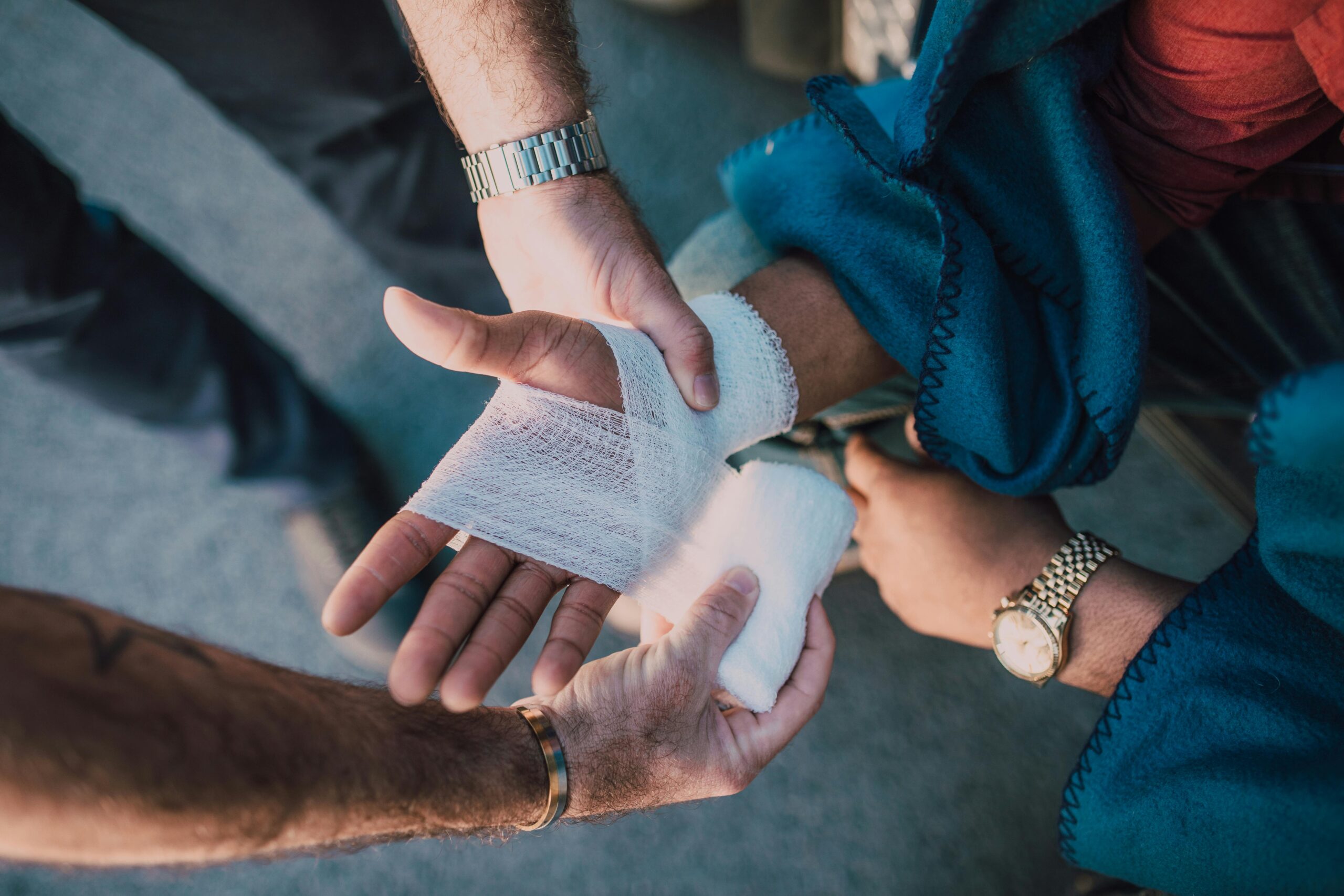Regenerative medicine represents a revolutionary frontier in healthcare, offering unprecedented solutions for wound healing that go far beyond traditional treatments and bandages. 🌱
The human body possesses an extraordinary capacity to heal itself, yet certain wounds—whether from trauma, surgery, chronic disease, or aging—challenge this innate ability. Traditional wound care has relied on keeping wounds clean, protected, and allowing natural healing processes to take their course. However, regenerative medicine is transforming this paradigm by actively harnessing and amplifying the body’s own repair mechanisms to accelerate healing, reduce scarring, and restore function more completely than ever before.
This emerging field combines cutting-edge biotechnology, cellular therapy, tissue engineering, and molecular biology to create treatments that don’t merely manage wounds but actively regenerate damaged tissue. From diabetic ulcers that refuse to heal to severe burns that devastate skin integrity, regenerative approaches are providing hope where conventional methods fall short.
Understanding the Science Behind Regenerative Wound Healing 🔬
Regenerative medicine operates on a fundamental principle: rather than simply covering or protecting a wound, we can stimulate the body’s own repair systems to rebuild tissue at the cellular and molecular level. This approach involves multiple sophisticated mechanisms working in concert.
At its core, wound healing progresses through several overlapping phases: hemostasis, inflammation, proliferation, and remodeling. Regenerative therapies intervene strategically in these phases to optimize each stage. They deliver growth factors, stem cells, or bioactive molecules directly to the wound site, creating an environment that promotes faster, more complete tissue regeneration.
Growth factors such as platelet-derived growth factor (PDGF), vascular endothelial growth factor (VEGF), and transforming growth factor-beta (TGF-β) play crucial roles in orchestrating cellular activities. These signaling proteins tell cells when to migrate, proliferate, and differentiate—essential processes for building new tissue. Regenerative treatments often concentrate these factors at therapeutic levels far exceeding what the body produces naturally.
The Role of Stem Cells in Tissue Repair
Stem cells represent perhaps the most exciting component of regenerative wound healing. These remarkable cells possess the unique ability to differentiate into various specialized cell types needed for tissue repair. Mesenchymal stem cells (MSCs), in particular, have shown tremendous promise in wound healing applications.
When applied to wounds, stem cells don’t just become new tissue cells themselves. They also secrete paracrine factors—molecules that influence surrounding cells to participate more actively in healing. This creates a cascade effect where the therapeutic benefit extends far beyond the stem cells themselves, recruiting the body’s own resources into the healing process.
Revolutionary Therapies Transforming Wound Care Today
The translation of regenerative medicine from laboratory research to clinical practice has produced several breakthrough therapies now available to patients struggling with difficult wounds.
Platelet-Rich Plasma (PRP) Therapy 💉
One of the most accessible regenerative treatments, PRP therapy concentrates platelets from the patient’s own blood and applies them directly to wounds. Platelets contain numerous growth factors stored in alpha granules that, when released, trigger tissue regeneration.
The procedure is remarkably straightforward: clinicians draw a small blood sample, process it through centrifugation to concentrate platelets, then apply this enriched plasma to the wound. Because it uses the patient’s own blood, PRP carries minimal risk of rejection or adverse reactions.
Clinical studies have demonstrated PRP’s effectiveness for various wound types, including surgical wounds, diabetic foot ulcers, and chronic leg ulcers. Patients often experience reduced healing times, decreased infection rates, and improved tissue quality compared to standard care alone.
Bioengineered Skin Substitutes
When wounds are too extensive for natural healing processes to bridge, bioengineered skin substitutes provide a scaffold that supports tissue regeneration. These sophisticated products range from simple collagen matrices to complex bilayered constructs containing living cells.
Some skin substitutes are acellular—they contain no living cells but provide an extracellular matrix that guides the patient’s own cells into the wound. Others are cellular products containing fibroblasts, keratinocytes, or both, which actively participate in building new tissue. These living skin equivalents essentially provide a “jump start” to the healing process by delivering functional cells directly where they’re needed.
The FDA has approved several bioengineered skin products for specific indications, particularly for diabetic foot ulcers and venous leg ulcers that have failed to respond to conventional treatment. Clinical evidence shows these products can achieve closure rates significantly higher than standard wound dressings alone.
Addressing Chronic Wounds: A Major Healthcare Challenge 🏥
Chronic wounds—those failing to heal within three months—affect millions globally and represent an enormous healthcare burden. Diabetic foot ulcers, pressure ulcers, and venous leg ulcers account for the majority of these difficult cases, often leading to severe complications including amputation.
Traditional treatments for chronic wounds focus on managing infection, maintaining moisture balance, and removing dead tissue. While necessary, these approaches don’t address the underlying molecular and cellular dysfunction that prevents healing. Chronic wounds typically exhibit prolonged inflammation, decreased growth factor production, senescent cells that no longer function properly, and impaired angiogenesis—the formation of new blood vessels essential for delivering nutrients and oxygen.
Regenerative medicine tackles these root causes directly. By delivering concentrated growth factors, viable cells, or biomaterials that modulate the wound environment, these therapies can essentially “reset” the healing process, moving a stalled chronic wound back into productive repair phases.
The Economic and Quality of Life Impact
Beyond the medical considerations, chronic wounds impose devastating economic and personal costs. Healthcare systems spend billions annually treating these conditions, with individual cases often requiring months or years of continuous care. Patients suffer reduced mobility, chronic pain, social isolation, and significant psychological distress.
Regenerative approaches, while sometimes more expensive upfront, can dramatically reduce overall treatment costs by achieving faster healing and reducing complications. More importantly, they restore patients’ quality of life—returning them to work, social activities, and independence far sooner than conventional treatments.
Cutting-Edge Innovations Shaping the Future 🚀
The field of regenerative wound healing continues to evolve rapidly, with numerous exciting developments on the horizon that promise even more effective treatments.
3D Bioprinting of Skin Tissue
Perhaps no technology captures the imagination quite like 3D bioprinting—the ability to literally print functional tissue layer by layer. Researchers have successfully bioprinted skin constructs containing multiple cell types arranged in architectures that mimic natural skin.
This technology offers unprecedented customization potential. Theoretically, bioprinters could create patient-specific skin grafts matched precisely to wound dimensions and depth. Some experimental systems can even print directly onto wounds, depositing cells and biomaterials in situ to cover large areas rapidly.
While still primarily in research stages, several bioprinted skin products are advancing through regulatory pathways. Within the next decade, bioprinting may become a standard tool in burn centers and wound clinics worldwide.
Gene Therapy Approaches
Gene therapy for wound healing involves introducing genetic material into wound cells to enhance their healing capabilities. Researchers are exploring several strategies, including delivering genes that code for growth factors, enzymes that break down excessive scar tissue, or factors that promote blood vessel formation.
One promising approach uses viral vectors to temporarily introduce genes into wound site cells, causing them to produce therapeutic proteins for a limited period. This creates sustained, localized delivery of healing factors without the need for repeated applications.
Exosome-Based Therapies
Exosomes—tiny membrane-bound vesicles released by cells—have emerged as powerful mediators of tissue regeneration. These nanoparticles carry proteins, lipids, and genetic material between cells, essentially delivering instruction sets that influence cellular behavior.
Stem cell-derived exosomes appear particularly beneficial for wound healing. They promote angiogenesis, modulate inflammation, and stimulate tissue regeneration without the complexity and regulatory challenges of using live stem cells. Because exosomes can be standardized, stored, and mass-produced more easily than cells, they may offer a more practical path to widespread clinical use.
Optimizing Healing: The Synergy of Technologies and Lifestyle 🌟
While regenerative therapies offer remarkable capabilities, they work best as part of comprehensive wound management strategies that address both biological and lifestyle factors affecting healing.
Nutrition’s Critical Role
Proper nutrition provides the raw materials for tissue regeneration. Protein supplies amino acids for building new tissue, vitamin C is essential for collagen synthesis, zinc supports immune function and cell division, and adequate calories provide energy for metabolically demanding healing processes.
Patients with wounds should work with healthcare providers to ensure nutritional adequacy. Sometimes, supplementation becomes necessary, particularly for elderly patients or those with absorption issues. Even the most advanced regenerative therapy cannot compensate for severe nutritional deficiencies.
Managing Underlying Conditions
Many chronic wounds stem from underlying diseases—diabetes, vascular disease, autoimmune conditions—that must be managed for optimal healing outcomes. Blood sugar control in diabetic patients, for instance, directly impacts wound healing capacity. Similarly, addressing venous insufficiency or arterial disease ensures adequate blood flow to support tissue regeneration.
Regenerative therapies achieve their best results when integrated into holistic care plans that address these systemic factors alongside local wound treatment.
Navigating Treatment Options: What Patients Should Know 💡
For patients dealing with difficult wounds, understanding available regenerative options and how to access them is crucial. Not all treatments are appropriate for every wound type, and availability varies by location and healthcare system.
Questions to Ask Your Healthcare Provider
When discussing regenerative treatments, patients should inquire about several key factors:
- Which regenerative therapies are appropriate for your specific wound type and circumstances?
- What evidence supports the recommended treatment for your condition?
- What are realistic expectations for healing timeframes and outcomes?
- What are potential risks or side effects?
- What does the treatment protocol involve, and how many sessions might be needed?
- What is the cost, and what portion might insurance cover?
- Are there clinical trials available that might provide access to emerging therapies?
The Insurance and Access Challenge
Coverage for regenerative wound treatments varies considerably. Some established therapies like certain bioengineered skin products have gained insurance coverage for specific indications after demonstrating clinical and economic value. Newer treatments may have limited or no coverage, requiring out-of-pocket payment or enrollment in clinical trials.
Specialized wound care centers and academic medical centers typically offer the widest range of regenerative options. Patients with wounds that aren’t responding to standard care should consider seeking evaluation at such facilities, where multidisciplinary teams can assess candidacy for advanced therapies.
Ethical Considerations and Regulatory Landscape ⚖️
As regenerative medicine rapidly advances, important ethical and regulatory questions accompany these powerful technologies. Ensuring patient safety while promoting innovation requires careful balance.
Regulatory agencies like the FDA in the United States have developed frameworks specifically for regenerative medicine products, distinguishing between minimally manipulated tissues, cell-based products, and more extensively engineered constructs. These regulations aim to ensure products are safe and effective before reaching patients while not unnecessarily impeding beneficial innovations.
Patients should verify that any regenerative treatment they receive has appropriate regulatory approval or is being offered within an approved clinical trial. Unfortunately, some clinics offer unproven “stem cell” treatments that lack scientific validation and regulatory oversight, potentially exposing patients to risk without benefit.

The Road Ahead: A Healing Revolution in Progress 🌈
Regenerative medicine has already transformed wound care from a field focused on passive management to one actively orchestrating tissue renewal. Yet we stand only at the beginning of what’s possible. As understanding of healing biology deepens and technologies advance, regenerative approaches will become increasingly sophisticated, personalized, and effective.
The convergence of multiple scientific disciplines—stem cell biology, materials science, bioengineering, immunology, and genomics—is accelerating progress. Treatments that seemed like science fiction just decades ago are now clinical realities, with even more remarkable therapies in development.
For the millions suffering from wounds that won’t heal, this represents genuine hope. Regenerative medicine offers not just faster healing but better healing—tissue that more closely resembles what was lost, with improved function and appearance. It’s enabling limb salvage for patients who might otherwise face amputation, restoring mobility to those previously disabled by non-healing wounds, and fundamentally improving quality of life.
The future of wound care lies in harnessing our bodies’ remarkable regenerative potential, amplifying it with advanced therapies that work in harmony with natural healing processes. As research continues and technologies mature, regenerative approaches will likely become the standard of care rather than the exception, making truly regenerative healing accessible to all who need it. The revolution in wound healing isn’t coming—it’s already here, transforming lives one healed wound at a time.
Toni Santos is a longevity writer and regenerative medicine researcher dedicated to exploring how biology, technology, and ethics can extend healthspan. With a focus on cellular repair and anti-aging biotechnology, Toni examines how next-generation therapies translate lab breakthroughs into real-world vitality. Fascinated by stem cell science, telomere dynamics, and systems biology, Toni’s journey bridges research reviews, expert interviews, and clear public communication. Each article he shares aims to separate evidence from hype—helping readers understand what’s promising, what’s premature, and what truly supports long-term health. Blending molecular biology, clinical insight, and accessible storytelling, Toni investigates interventions that target the root drivers of aging. His work honors responsible innovation—prioritizing safety, transparency, and human wellbeing in the pursuit of extended healthspan. His work is a tribute to: Anti-aging biotechnology grounded in rigorous evidence Cellular rejuvenation pathways that restore function and resilience Stem cell and telomere research advancing ethical longevity care Whether you’re a clinician, researcher, or health enthusiast, Toni Santos invites you to explore the frontiers of regeneration—one discovery, one mechanism, one healthier year at a time.




